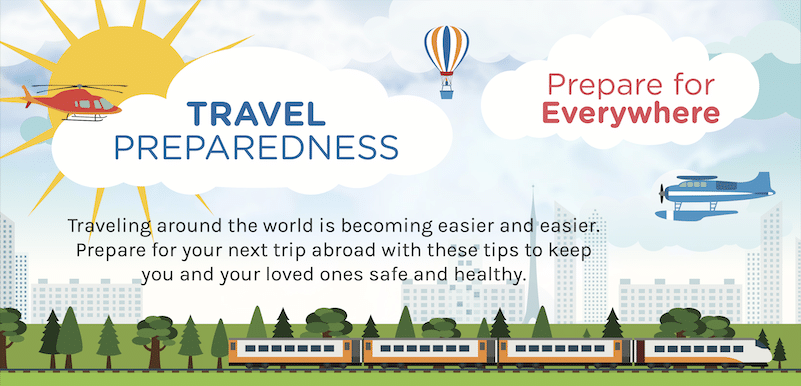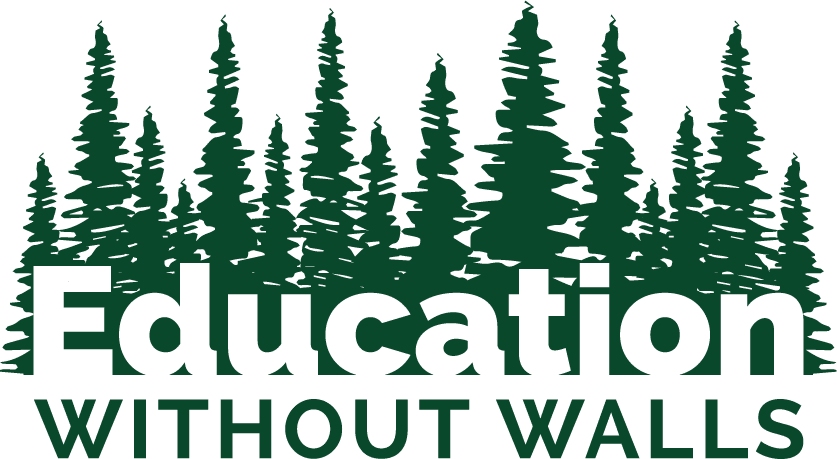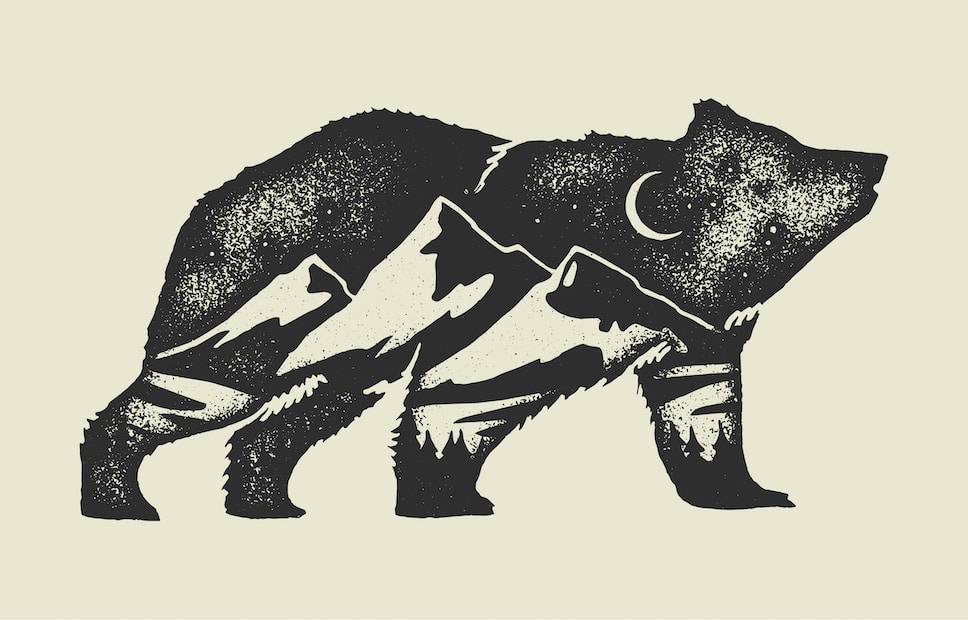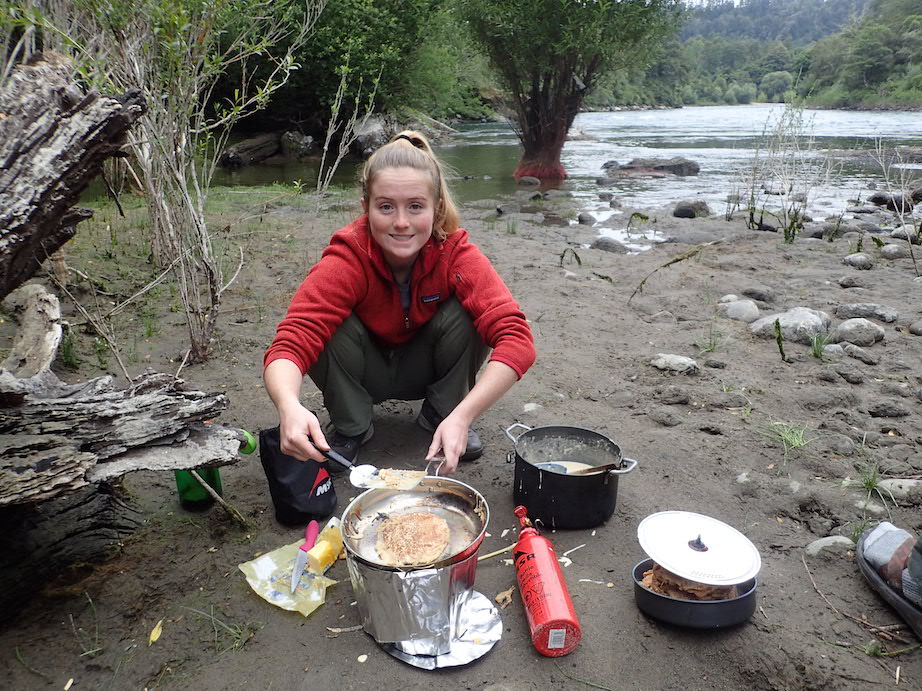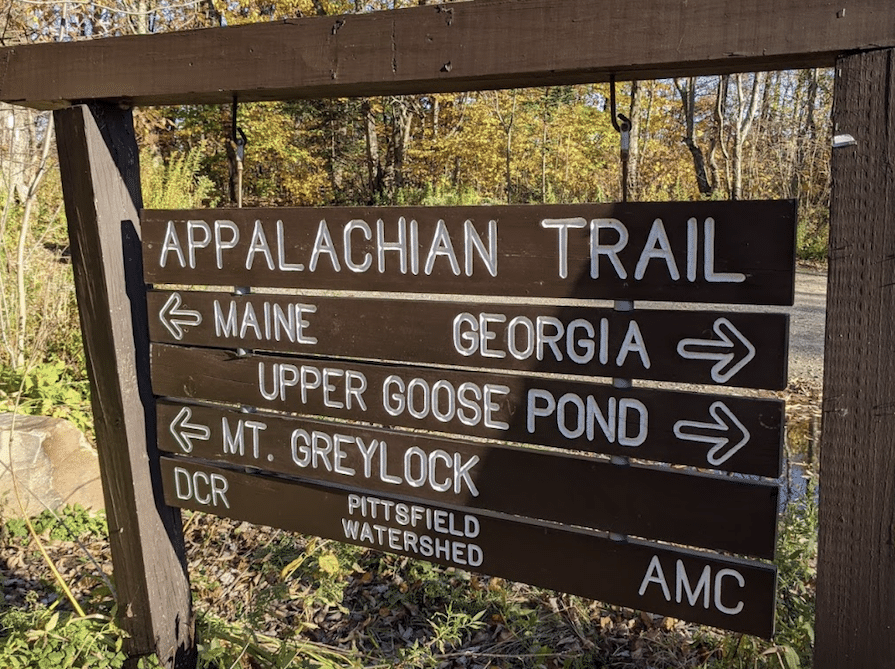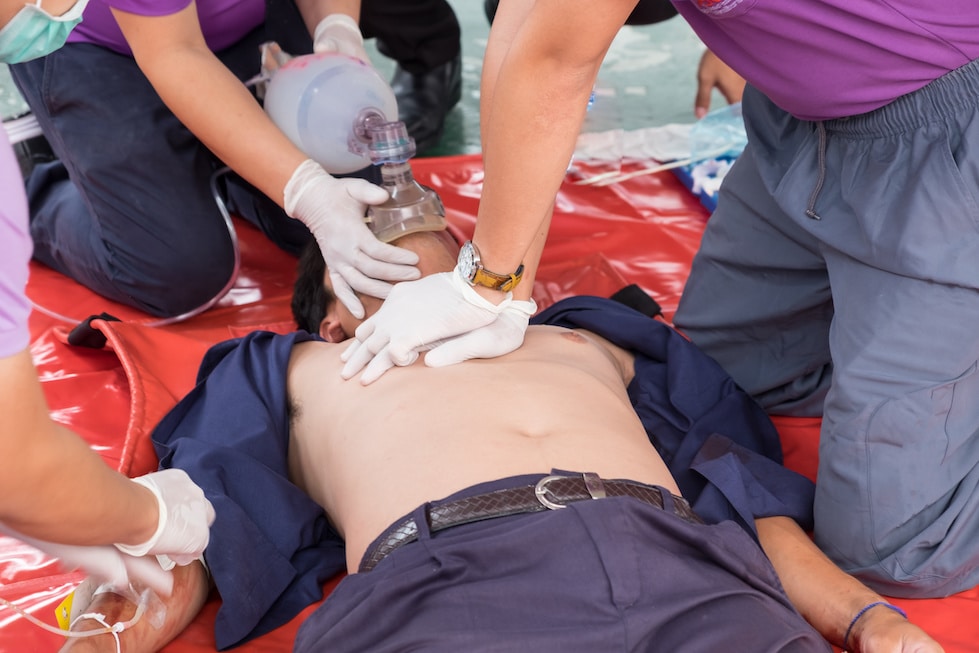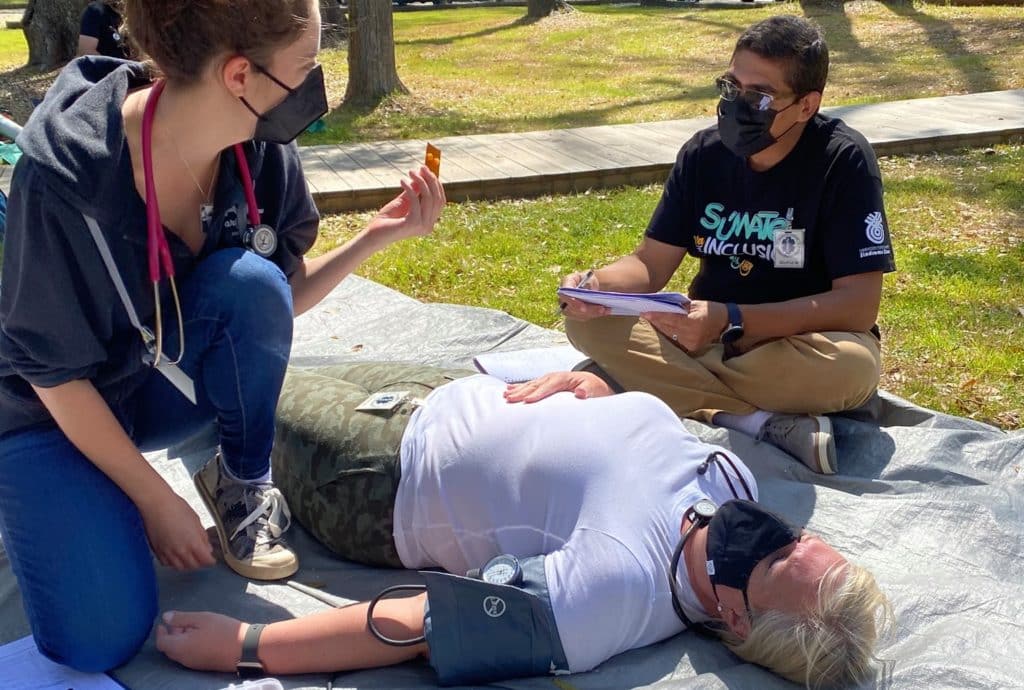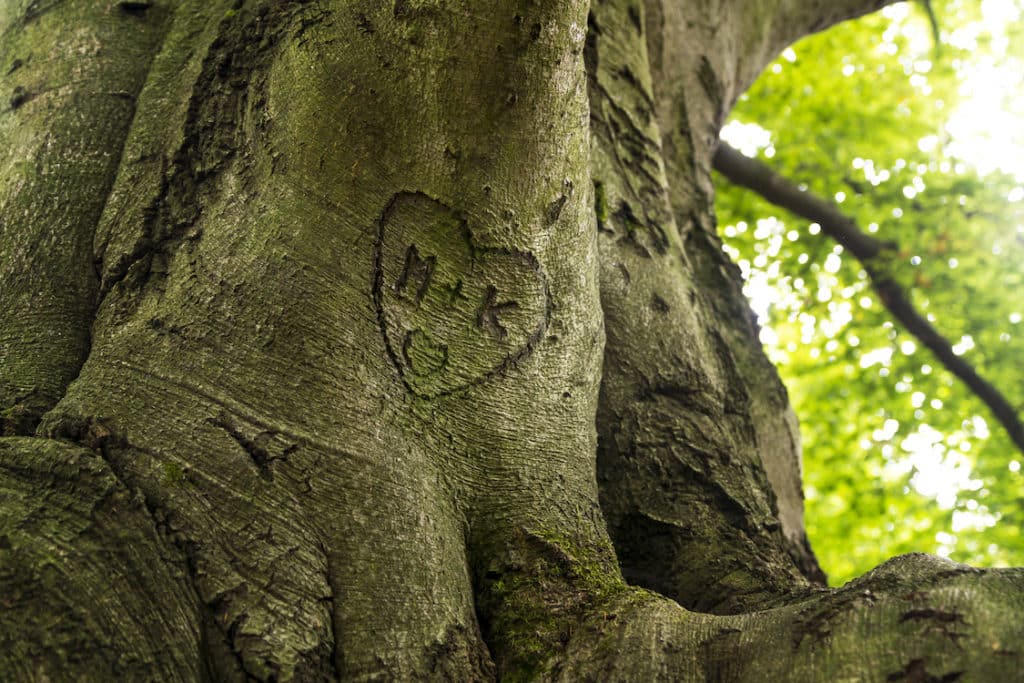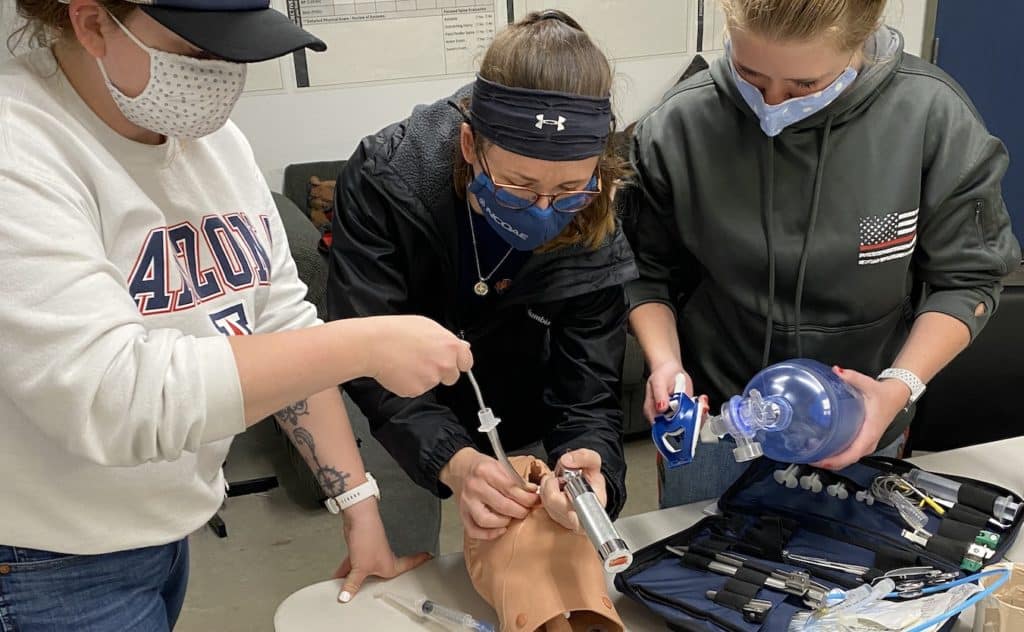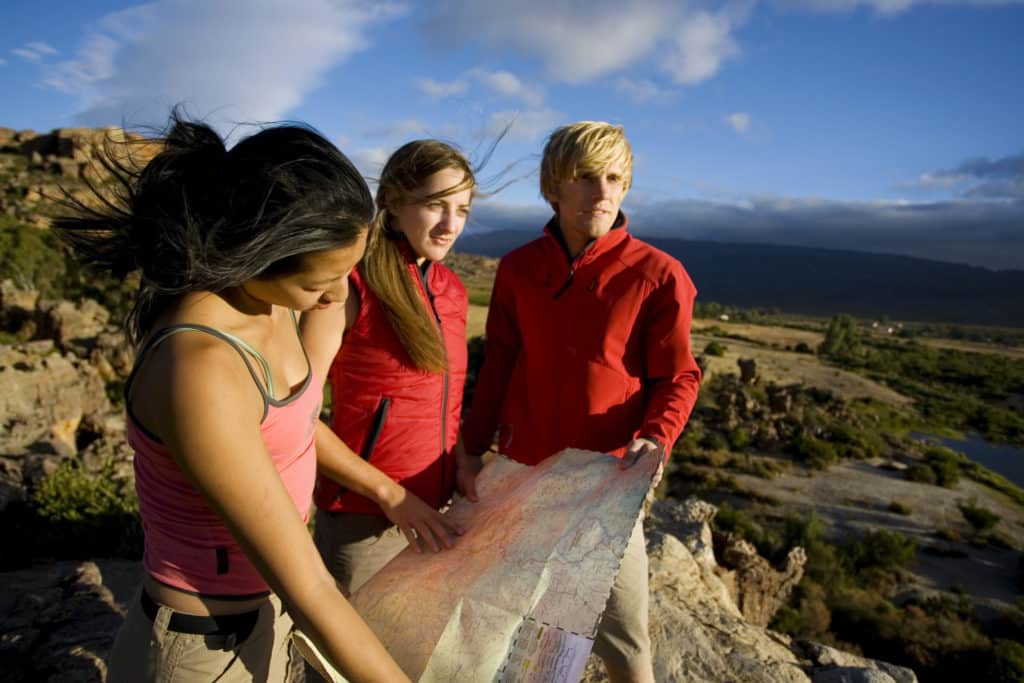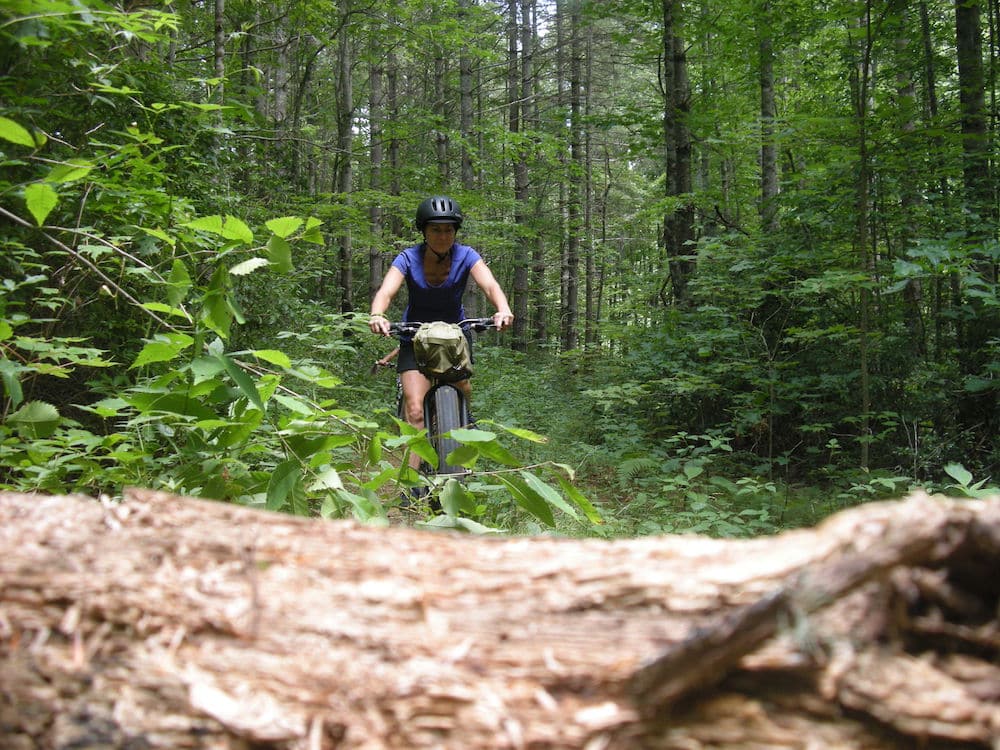NCOAE Blog
Safety Considerations for Adventure Travel in Foreign Countries
UncategorizedThere are few activities that provide a greater explosion of sense and emotions than putting foot in a new land — a foreign place where you have to navigate language, landscape, and culture practically the instant you arrive.
Memories of stepping off a plane and heading out of the airport in Kathmandu, Port Au Prince, and Guatemala are forever stored and accessible in my brain’s happy file. Prominent among these are the new smells, the architecture, the people, and the only slightly realization that you’re not in Kansas anymore. Or North Carolina or wherever it is you call home.
And the places to which we travel, and the experience we take away from those adventures are tied directly to how safe we feel while out exploring.
As more of us prepare to climb on planes, trains, and boats again, NCOAE wants to share some of the safety and risk mitigation tips we have learned along the way when traveling far from home with clients from all walks of life.
With the tips we offer below, the focus is on adventure travel and ecotourism. Don’t neglect to research basic travel tips as well.
Let’s get started:
(more…)Update from NCOAE Spinoff — Education Without Walls
Education Without WallsIf you’re a regular reader of our blog, you may recall that Education Without Walls (EWOW) began more than a decade ago here at The National Center for Outdoor & Adventure Education (NCOAE).
Today, EWOW has become a successful organization — a self-sustaining not-for-profit complete with its own administrative staff, board of directors, programs, and funders… all of which are focused on providing academic and life skills guidance for motivated teens with financial need.
With that as background, the rest of today’s post focuses on what this fledgling organization has been up to since spinning off from NCOAE, and what’s on its horizon.
The Big 24
The organization’s first big fundraising event — The Big 24, which aims to raise enough funds to award one-year scholarships to 24 deserving students — begins this Sunday (Aug. 15) and runs through Oct. 15, culminating with a first-ever “Evening Without Walls” fundraising event.
For information on The Big 24 and how you can help, please The Big 24 webpage or contact EWOW’s Executive Director, Celine Adair, MA, LMFT by email or by calling (910) 515-9157.
Summer Expeditions
Education Without Walls has always been focused on merging meaningful outdoor adventures with ongoing mentorship to assist aspiring students in identifying and accomplishing their (more…)
The Three Bears: Part 3 — Decision Time for the Trailbike Rider
WildlifeEditor’s Note: Below is final part in Stephen Mullaney’s three-part series of essays about encounters with bears in the backcountry. The first essay in the series recants the shock Stephen experienced with one particular bear encounter, while the second essay in this series attempts to find humor in a persistent bear taking up quarters in an NCOAE camp late at night. This time around, Stephen — who serves as Director of School Partnerships here at The National Center for Outdoor & Adventure Education (NCOAE) — writes about a timing issue.
Decision Time for the Trailbike Rider
When NCOAE offers larger courses or custom outdoor education courses, we try to have a floater in the field. The floater is an instructor who knows the course area, can navigate to multiple groups in a single day, and has the ability to be flexible and help out when groups are in need of extra support.
I enjoy being a floater because it allows me to see the NCOAE field staff in action. To watch an NCOAE instructor teach is inspiring to me. It also has the added benefit of allowing me to discover different approaches to teaching our curriculum. As a result, being a floater is akin to real-time professional development.
On one particular wilderness course for which I was the floater, we 11 crews/groups in the field. Because of the distance between the groups, the terrain that would need to be traversed, and the need to reach groups quickly, I figured using a trail bike was a no brainer. I could get to each group every four days and still be able to respond to any group that may need outside support in a quicker fashion.
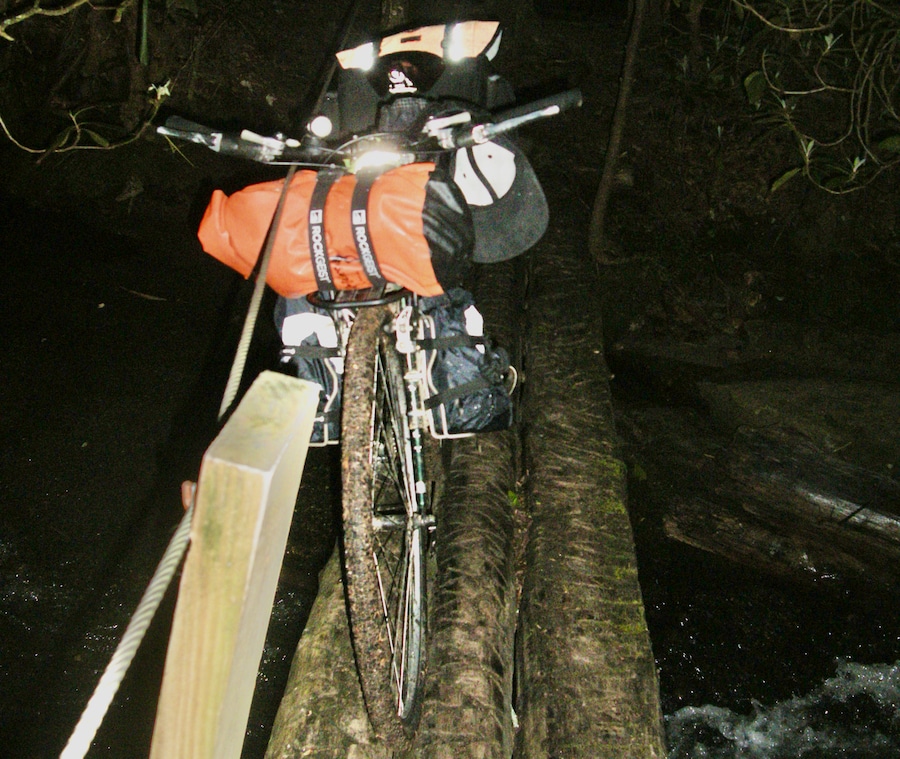
Each day I woke up, left the crew with which I had spent the night, and headed off to meet the next crew before they had even had their breakfast. Then I was off to the next group before lunch, and I usually showed up to meet my final crew for the day a little before dark. Or very much after dark depending on circumstances.
(more…)The Three Bears: Part 2 — Some Confrontations Can Be Humorous
WildlifeEditor’s Note: In this, the second installment of “The Three Bears,” we’ll hear from NCOAE staffer Stephen Mullaney tell yet another true tale about confrontations with bears. In this post, he’ll attempt to find the humor in a persistent bear taking up quarters in an NCOAE camp late at night. But let’s let Stephen tell the story:
The spot where this particular bear adventure occurred is conveniently located near an area we used for climbing instruction. Unfortunately, the site is also known for its occasional bear activity, and with proper planning and risk mitigation, can be safely used for that purpose. This was an outdoor education industry training trip, and all participants were adults with lots of experience guiding in the backcountry.
We had finished cleaning up camp, putting our bear canisters well away from campsite and had settled down for a well-deserved night of sleep after a long day of climbing. I laid down in my hammock and was asleep in an instant.
Having spent an incredible number of nights sleeping in the woods, I have learned the difference between a stick or branch falling, being blown by the wind or being cracked in half under the weight of a large animal.
The crack that woke me up was the crack made by the weight of a large animal.
I rolled over, lifted my tarp, and took stock of the situation. I didn’t get out my hammock, because I didn’t want to fully wake up if everything looked copacetic. No more sound means more sleep, and I rolled over and fell back to sleep.
Crack!
There it was again.
I repeated my previously approach of taking a peek while buried in my hammock. However this time the cracking continued, and I was able to (more…)
The Three Bears: Tales of Terror and Trepidation — Part 1 “The Shock”
WildlifeWhen folks find out that my work often takes me into the backcountry, one of the first questions they usually ask me is, “Have you ever had a run-in with a bear — a bear encounter?”
After I tell them that I have had run-ins with bears in the backcountry, they ask what’s that’s like. And that’s when I share that there are many emotions attached to an encounter with a bear in the wilderness, ranging from shock, to humor, to the sudden and unexpected “meet and greet” where you wonder, “Am I going to have to physically engage with this bear?”
First up in this three-part series on bear encounters in the backcountry is a true story about ashocking bear encounter.
A Shocking Bear Encounter
It was Day Two on a multi-day backcountry expedition when someone in the group needed to stop and use the facilities, meaning off the side of the trail. The hiker asked for the “Poop Kit,” which contains hand sanitizer, a trowel to dig a hole and everything else needed for a semi-comfortable sitting.
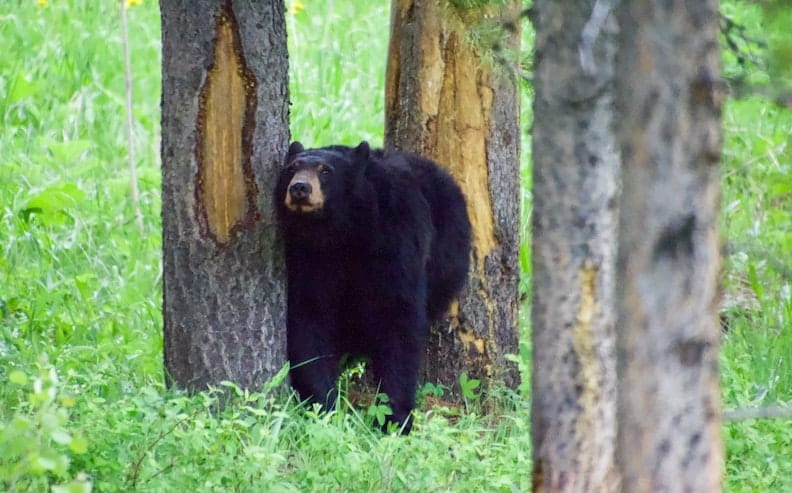
Problems arose when no one could find the kit. As an aside, when traveling as a group, each participant is responsible for carrying the same communal gear each day — that way, nothing gets lost. So, who had been carrying the kit for the entire trip?
A voice spoke up, “I’m supposed to have it, but it’s not in my bag.”
Someone else said, “I saw it by the fire ring this morning while we were getting ready to head out.”
Not too happy, I looked at my co-leader and told him, “One of us needs to hike back and get it while the other gets the group into camp.” I lost the coin toss, and prepared to head back to get the kit. Wanting to travel light, I hung my backpack up in a tree, grabbed a snack and a bottle of water and headed the four miles back to the previous night’s campsite.
(more…)Making Dehydrated Delicious: 4 Quick Backcountry Recipes
Wilderness CookingHere at The National Center for Outdoor & Adventure Education, we’re known for bringing gourmet meals to the wilderness. And since we carry all our food either on our backs or in our boats, we try to pack ingredients that begin in their lightweight dehydrated form. That makes for an easier time on the trail, and it leaves room in our packs for fresh vegetables and fruit to mix things up.
Meals in the backcountry offer a variety of options — from meat and grains to fresh baked bread and pizza made from scratch. Our students learn to cook meals on the trail, often developing cooking skills that they can bring home to the front country.
Here are some our staff members’ and students’ favorites from the trail that you might want to prep and cook on your next outdoor adventure:
Blueberry Pancakes
Who doesn’t like pancakes first thing in the morning? This trail-proven recipe is sure to get your day started on the right footing. Blueberries, after all, are more than just sweet and nutritious — they’re also known to play a role in reducing muscle damage, especially after strenuous exercise.
(more…)Tales from The Trail: The ‘Cookie Lady’ of the Appalachian Trail
InspirationThere are always lessons to be learned on the trail, and they aren’t always related to building a campfire, setting up a tent, or leaving your campsite cleaner than when you arrived.
Some of these are life lessons that fall in the category of treating others as you would like to be treated and adhering to the principles of human kindness. Take, for instance, an experience I had while hiking along a stretch of the 2,200-mile Appalachian National Scenic Trail, or simply, the AT.
For days, I kept running across hikers along a Massachusetts section of the AT, and often during our short conversations, they would tell me stories about a “Cookie Lady” on up the trail. It got to the point where it seemed every other hiker told me, “You just gotta stop at the “Cookie Lady’s” house. Best cookies ever!”
Then these thoughtful fellow travelers would painstakingly give me directions to a blueberry farm just off the trail in western Massachusetts. It seems Marilyn Wiley, along with her husband Roy, owned the farm in rural Washington, Mass., that had several outbuildings, including one with what appeared to be storing a small airplane.
And since buying the place back in 1983, Marilyn Wiley would walk out front and hand out her scrumptious cookies to blueberry pickers and hikers passing her farm on the Appalachian Trail.
A few days into that part of my trek, I found myself approaching a country road in western Massachusetts in search of (more…)
Mental Health Issues for Emergency Medical Technicians
EMT TrainingBecoming a full- or part-time Emergency Medical Technician requires extreme and rigorous training, and it’s not a career choice to be taken lightly. That’s because emergency medical responders encounter patients in life-threatening situations, ranging from traumatic incidences of cardiac arrest and auto accidents, to drownings to drug overdoses.
EMS techs like the ones we train here at The National Center for Outdoor & Adventure Education work for hospitals, municipalities, and fire departments, and often provide emergency assistance in everyday urban areas as well as at ski areas, throughout the backcountry, at sports events, and even on offshore oil rigs. As a result, those who choose to become EMTs face high-stress situations daily, often dealing with patients who have just suffered a life-changing trauma.
Long shifts in an emergency department or in the back of an ambulance can take a toll, as well poor sleeping habits to due irregular working hours and poor eating habits because of the on-the-run nature of the profession. To make things worse, there’s a stigma attached to EMTs that purports a higher rate of mental health disorders than other occupations, including an increased risk of depression, suicidal thoughts, and a higher rate of substance abuse.
Which is why it’s important that those working in emergency medical services avoid burnout and take care of themselves so that they can continue to support the communities they serve.
Here are some things you can do to take care of yourself as an EMT: (more…)
Trail Nutrition: Planning and Prepping Backcountry Meals
Wilderness CookingPreparing backcountry meals and focusing on trail nutrition is important when planning meals for your next outdoor adventure. Whether you’re organizing a day hike, overnight camping trip, or multi-day backcountry adventure, maintaining good nutrition while exploring the outdoors is key to have a good time on your next adventure.
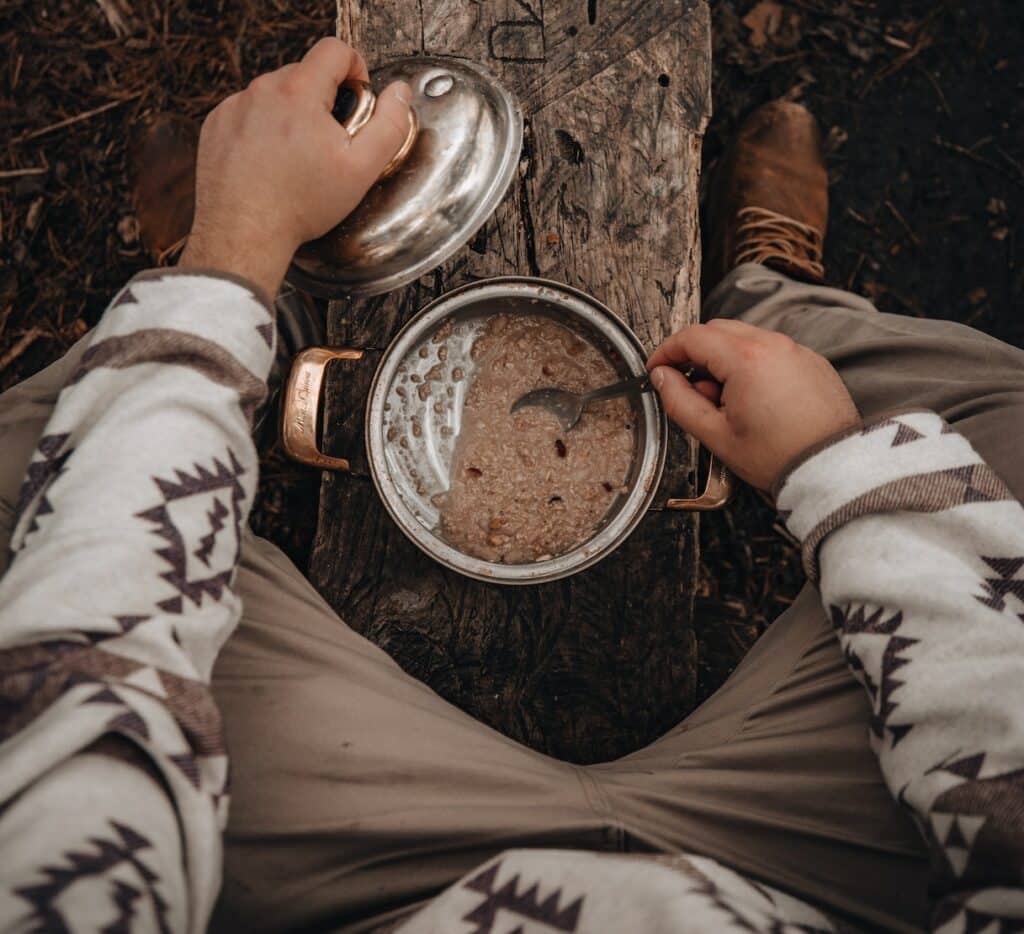
First on the list? Be sure to start your day off right with a good breakfast. That’s the meal that will set the tone for your day and jumpstart your metabolism. Throughout the day, that morning meal will help you maintain good blood sugar levels and energy.
Planning a Backcountry Menu
Here’s the deal when it comes to planning a backcountry menu: You need to find a balance between getting enough food (calories) to sustain yourself and stay well fed and warm, while not overdoing it and ending up hauling an unnecessary amount of weight on your back.
Depending on the weather, mileage, pack weight, activity, incline of the trail, and other factors, you’ll want to consider your group’s necessary daily calorie intake. Common sense tells us that if you’re planning to be more active than usual, you’ll burn through more calories.
For a multi-day backpacking trip, a good average is 3,500 calories a day per person. A good baseline is a limit of 1.5 pounds to 2.5 pounds of food per person, based on how strenuous you expect your trip to be.
(more…)Engaging Teens in the Outdoors
NCOAE RecommendsGetting your child or teen to look up from their smartphone, put down their Xbox controllers, or step away from the TV can be a chore — and that’s just when you’re calling them to dinner.
Mention taking a walk around the block or joining the family on a picnic a local park and witness the wailing and gnashing of teeth.
If you look at our nation’s history since the end of World War II, you see that service men and women returned to the United States and began to grow families. These households scrimped and saved to purchase such luxuries as high-fidelity stereo systems, black and white television sets, and a second car. Most of these new items enabled folks to enjoy life indoors, or drive to the drugstore instead of walking.
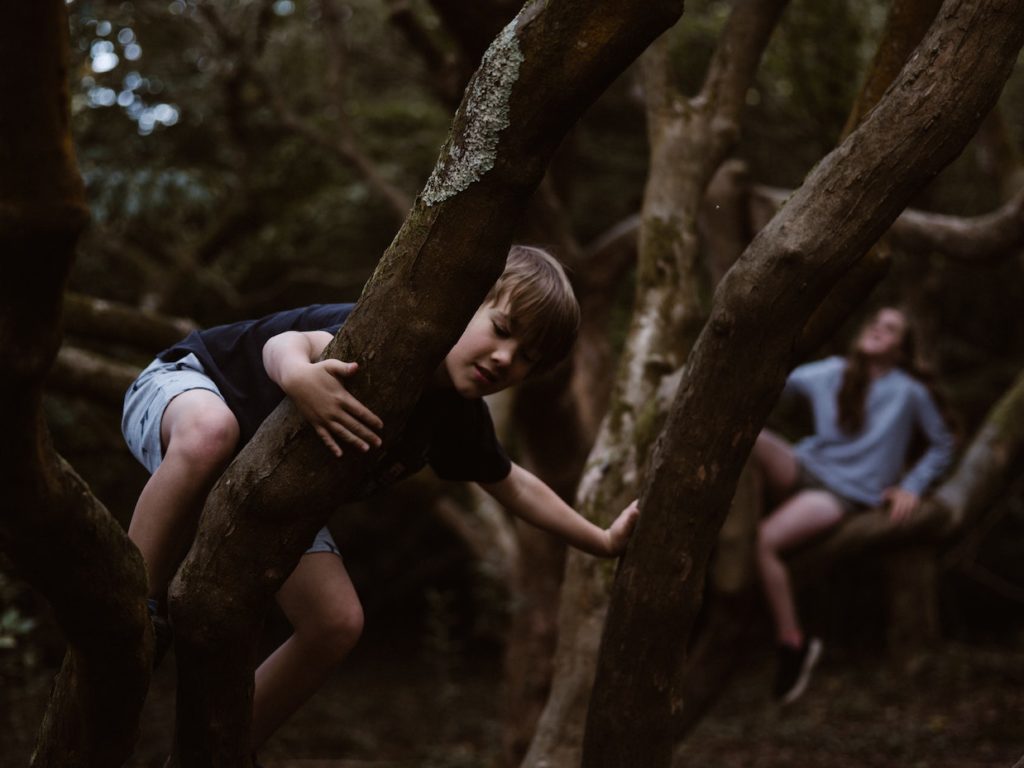
Fast forward 75 years and we find that families — and especially teens — have dozens of electronics devices at hand, each able to deliver entertainment from the comfort of their couch or bedroom.
So, how do we as families, let alone as a nation, compete with all these shiny handheld toys and devices, and get our kids out of the house and into the outdoors? When I was young, I was tossed out of the house early in the morning. I would jump on a skateboard or bike and search out the wild side of urban landscapes.
Not so today. Below, I’ve listed four action verbs that can get the ball rolling toward get kids interested in exiting their indoor surroundings.
(more…)Signs That an Intensive EMT Training Course Might be Right for You
EMT TrainingIntensive is one of those words that, when you say it out loud or write it down, sounds foreboding or, as the word itself suggests, promotes a feeling of tenseness. However, when we talk about completing an intensive EMT training course here at The National Center for Outdoor & Adventure Education (NCOAE), the word is not meant to scare you off.
Instead, it’s intent is to communicate the level of dedication you’re capable of putting into such a program, given the brief timeframe allotted for the program. And by brief, consider this: You can complete a high school EMT program in about a year. A university college course typically takes about six months to complete, and a community college course normally takes a semester.
However, to complete an intensive EMT course, such as those offered here at NCOAE, the work can be completed in just 21 days. That’s three short weeks. Boom! Done! Let me take the National Registry of Emergency Medical Technicians (NREMT) exam!
Benefits of the Intensive Approach to EMT Training
Know this: With an intensive program, you’re going to learn everything you need to know to take and pass the NREMT exam, and you’re going to learn it quickly. Just be prepared to take in a lot of information in a short amount of time. Here are a few of the advantages of intensive learning: (more…)
Understanding the Role EpiPens Play in Urban and Wilderness Settings
Wilderness Medicine TrainingFor those who suffer severe allergic reactions to everything from wasp stings to wheat consumption, getting help — and getting that medical intervention fast — may mean the difference between life and death.
Here at The National Center for Outdoor & Adventure Education (NCOAE), we train our Emergency Medical Technician (EMT) students and Wilderness First Responder (WFR) students in the use of EpiPen, an autoinjector for those suffering a sudden anaphylaxis reaction.
This somewhat imposing emergency medicine tool is an injection device that contains epinephrine, a chemical that narrows blood vessels and opens airways in the lungs. A promptly administered injection may reverse severe low blood pressure, a rash or itchy skin, an alarming shortness of breath, hives, nausea, vomiting, and other symptoms of an allergic reaction.
Anaphylaxis is a life-threatening allergic reaction that requires immediate treatment, whether within the city limits or deep in the backcountry.
And while most anaphylaxis reactions are mild and self-limiting, it is impossible to predict — at least in the beginning — whether a reaction will become life-threatening. As a result, rapid intervention is always critical. A hiker’s risk for anaphylaxis increases if they suffer asthma that is severe or not controlled. Medical conditions such as heart disease can also increase the risk of an episode.
What can trigger an anaphylaxis episode?
The following are among of the most common causes of anaphylaxis:
- Milk, peanuts, tree nuts, eggs, shellfish, wheat, and soy
- Stings from bees, wasps, or fire ants
- Antibiotics, NSAIDs, or aspirin
- Latex
Adrenaline is the first line treatment for anaphylaxis and is most often administered using an autoinjector such as the EpiPen or drawn from a vial using a needle and syringe. EpiPen autoinjectors are available in two sizes — one for young children and another for those weighing more than 66 pounds. Since epinephrine is a prescription medication, anyone with a history of severe allergic reactions should have a prescription and the device at hand.
(more…)From Couch Potato to Hiker in Just 4 to 6 Weeks
InspirationApparently, I spent three quarters of last year and a quarter of this year mostly sitting on the couch. I held a beverage in one hand, chips, cheese and crackers in the other (and yes, I can hold that much).
Adding new meaning to the term “binge-watching,” I viewed dozens of subtitled, multi-season detective series from every nation in NATO — all of which I wouldn’t have sat through in the years leading up 2020. Sound familiar to you?
OK. Maybe your pandemic parade didn’t include as many snacks, and maybe you were watching adventure films while wearing your climbing harness on the couch, a rack of gear on the floor. That sound more likely?
But it’s possible that in either scenario, you never pulled back your window curtain to notice the outdoors is still there, just waiting for you to emerge. It’s time to get out from under the duvet, lose the pajama bottoms, and be outdoors more than you’ve been indoors and on your couch over the last 12 months or so.
You probably aren’t in as good of shape as you think
It’s also time to come to terms with reality. You’ve been marinating on a couch for more than a year now. If you were climbing 5.10 early last year, chances are you aren’t doing that now. The living room furniture has become a leech of progress and fitness.
The solution? Allow us to help you see how easy it is to get out of the house and onto the trail for a multi-day backpacking trip.
Most couch-to-5k programs are nine weeks long. However, the guide we put together below is only six weeks. And if you’re willing, you can probably knock that down to four weeks. Why? Because training can get boring. And if you get bored while training, you may never make it to the trail. We here at NCOAE want you on the trail.
So, what we’ve put together below is a guide. It’s not a program. It’s not a plan. Because if we can’t make it fun, you might just remain on the couch, reading subtitles and thinking you speak Swedish.
(more…)Thinking About Going to Med School? Start with EMT Training and Certification
EMT TrainingIf one of your goals is to apply to medical school and eventually become a doctor, here are a few of the hurdles you’ll need to jump through. First, you’ll need a four-year Bachelor of Science degree with a minimum 3.0 GPA, a passing score on the MCAT exam, and a few glowing letters of recommendation.
But how would you like to increase your odds of getting admitted and succeeding in med school? If so, you may also want to consider getting trained and certified as an emergency medical technician (EMT) and gaining some valuable experience in the field first.
According to a survey of 67 medical schools in the United States and Canada, 85 percent of those schools responded favorably to applicants with experience as EMTs or paramedics. That’s not exactly surprising. After all, EMTs have real-world experience in the medical field.
In this post, we highlight the advantages of obtaining EMT training and experience prior to applying for and enrolling in medical school.
Build Your Foundational Knowledge
EMT training helps to build your foundational knowledge in several medical disciplines, including the following: (more…)
Mother Nature Requests a Non-Disclosure Agreement on Secret Spots
WildernessYou’ve just finished packing up your gear and made sure that your favorite secret camping spot is in better shape than when you arrived. You’ve disposed of your waste properly and minimized your impact.
Suddenly, someone stumbles out of the tree line with a couple of sidekicks, tosses down a backpack and pulls a smartphone out of their cargo pants.
Two dozen photos and a short video later, all three cram their cell phone back in their shorts and excitedly speak how pristine the spot is. “This is great! And there’s hardly anybody here,” one of them says to another. “I can’t wait to post this stuff on Instagram and show everybody where we camped this weekend!”
With the advent of texting, tweets, drones with really good cameras, and phones that can take and post 12-megapixel photos and 4K video — along with their coordinates — it’s obviously past time to consider a nondisclosure agreement for Mother Nature’s treasured and off the beaten path locations.
The simple fact is wilderness (and the backcountry in particular) is taking a beating. And we all know what happens when Mother Nature isn’t happy.
Scientists Battle Location Giveaways on Social Media
Here’s a real-life example of why nature needs a nondisclosure agreement. I was guiding a research scientist on a trip to find an ancient bald cypress tree for his research. We spent hours paddling around to find the old tree, and when we did, the scientist wrote down the coordinates. He didn’t even share those coordinates with me in fear I might geotag a photo and post it online.
When I asked him to explain his clandestine actions, he told me that an enormous amount of damage has been done to ancient trees because coordinates have been posted along with pictures. He now refuses to geotag any of his posts.
And he has an excellent point. Close your eyes for a moment and picture that favorite spot that you found in your local woods, secret climbing crag, or untapped surf location. Now imagine dozens of billboards advertising those treasured spots, each boasting a million views and offering exact directions to each.
I can hear your screams from here. Can you hear mine? You would be angry on a volcanic level. (more…)
How to Become an EMT
EMT TrainingYou’re thinking about becoming an EMT. Awesome! If you follow through, you will be joining the ranks of today’s modern-day heroes, the frontline of the frontline workers — bona fide life savers!
Emergency Medical Technicians (EMTs) are trained professionals who provide care in critical and emergency situations. Such emergencies can range from simple, routine calls to intense and complex scenarios.
You may show up for a call only to discover that there is no victim, or the person is okay and refuses help, or a patient simply needs transportation from one medical facility to another. On the other hand, you could be called in to attend to the victim of a car accident or a shooting or a heart attack, drowning, mountaineering accident, or drug overdose. You may even have to deliver a baby! You can never predict what will happen over the course of any given shift.
As an EMT, your job responsibilities generally boil down to keeping patients alive using non-invasive medical procedures and transporting them safely to a hospital or clinic where they can receive a higher level of professional medical care. More specifically, you have three fundamental job responsibilities:
- Assessment and stabilization of the patient’s condition
- Basic life support
- Transportation
In this post, we bring you up to speed on the different levels in emergency medicine and credentialing while explaining the basic education and skills required to become an EMT.
(more…)Returning to School? We Want to Help you Safely Opt Out(side)
Outdoor EducationIn recent weeks, we’ve all been hearing more and more from parents, educators, and even the nation’s top disease experts on the impending opening of schools across the nation.
Dr. Anthony Fauci, who heads the National Institute of Allergy and Infectious Diseases, has suggested that school districts developing their plans for campus reopening should find ways to offer as many outdoor activities as possible. Fauci said that could include everything from outdoor classes, to recess, and lunchtime.
Plans for just when and how schools will reopen are being formulated and fine-tuned, and the consensus seems to be that being outside is the safest place to be during the instructional day. As states start to mandate returns to school, safety and quality of education are at the forefront of design.
Obviously, you’ll get no argument about that from those of us here at The National Center for Outdoor & Adventure Education (NCOAE). And we have some suggestions. But first, here are the questions we are hearing most often from you.
Why move outdoors?
Doctor Fauci already told us that spending time outdoors is safer during times of infectious diseases, and we’re puzzled why some schools forget that being outside is often best for our physical, emotional, and mental well-being. Studies have shown that, in districts with high numbers of second language students, learning outdoors is (more…)
Wilderness Courses in the New Year: Fresh Beginnings, Adventures, and Trails
About NCOAEMuch like most educational institutions this past year, we find ourselves looking down the road toward new beginnings. And for us here at The National Center for Outdoor & Adventure Education (NCOAE), that means new wilderness courses, upgraded emergency medicine education courses, and more wilderness medicine education programs. Long before 2020 faded into the rearview, we took a fresh and hard look at what we do, why we do it, and how we can do better by you — our students and client organizations.
As we emerge from the pandemic, we’ve designed courses that offer our participants more flexibility, greater breadth of instruction, and fresh course areas that will draw you deeper into the wild and yourself.
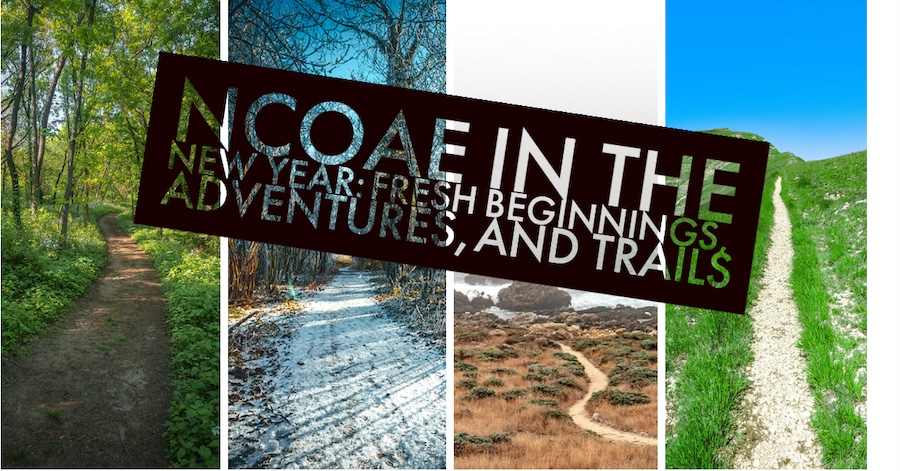
If your desire is to help yourself to adventure, here are a few of our offerings:
Emergency Medicine Education and Wilderness Medicine Education
We have worked hard to make Emergency Medicine Education and Wilderness Medicine Education easier to access and more flexible to participate in. Our hybrid medical courses enable you to start things off in your own home. That’s because one of the largest obstacles facing our students in the past was leaving home, quitting a job, or getting time off from work, and spending their savings on accommodations and food for extended periods of time. For some people, this trifecta of changes meant they had to abandon their dream of becoming part of the medical workforce.
Here at NCOAE, we design course that exceed industry standards, which means you will be a leader in knowledge and practice. Depth of instruction is not compromised by the hybrid format. In fact, our hybrid courses will prove to be a huge win for you, as studying from home only enhances the hands-on education that occurs once you’re on-site with us for the practical portion of your training.
(more…)Success is Just Getting Out There: Re-ignite Your Inner Beginner – Part 3
NCOAE RecommendsOn a recent early morning bike ride along some local wooded trails, I happen to stumble upon the greatest of beginners: a group of children playing with rocks, moss, and whatever “loose parts” they could lay their hands on. I smile and ride right past them, unwilling to break the spell.
But then I spot the father and we exchange “good mornings,” before I squeeze the brakes on my bike and come to a halt. I know this particular man and he just so happens to be a passionate member of the outdoor- and adventure-based experiential education community. And since I had been musing on how to approach this — the third installment of the NCOAE Re-ignite Your Inner Beginner series — bumping into this man on the bike trail was perfect!

The father’s name is Scott Schneider, and he’s a well-known senior lecturer of Outdoor Leadership at North Carolina State University in Raleigh. He teaches courses in backpacking, rock climbing, mountaineering, basic canoeing, and challenge course programming, to name a few.
Scott is also a certified American Mountain Guide Association (AMGA) guide with a Single Pitch instructor (SPI) designation to his credit, a Leave No Trace (LNT) trainer, Wilderness First Responder (WFR), and an Association of Challenge Course Technology (ACCT) certified challenge course manager.
Grabbing up my phone and turning on the mic, I asked Scott a few questions about staying fresh, excited, and teachable in the field. Here’s what he had to say:
(more…)Running as Exploration? Re-ignite Your Inner Beginner — Part 2
NCOAE RecommendsFrancis Bacon, the Renaissance statesman and philosopher best known for his promotion of the scientific method, is credited with the expression, “Knowledge is power.” But to those of us who prefer to see a world bathed in fresh new adventures, knowledge can actually be a curse.
Here at The National Center for Outdoor & Adventure Education (NCOAE), we encourage our students to take an adventure first / educational always approach to discovering new experiences; to become beginners at something fresh. Attempting something new promotes a growth mindset. It reminds us to reflect on our education expertise and empathize with those we teach and lead on first-time adventures. And it keeps us from getting stale.
In this, the second installment of the benefits associated with discovering new human-powered outdoor challenges, we’d like to introduce Christine Fantini, who has toiled for years in our industry as a guide and outdoor educator. For a good chunk of her career, Christine was a sailing instructor in Massachusetts, eventually becoming director of sailing programs for the Town of Yarmouth. She helped create OWLS (Outdoors We Learn to Succeed) in Durham, N.C.’s public schools.
In addition, Christine is a certified Kripalu yoga instructor, bringing yoga to children in inner city schools, and she also taught bilingual classes within the Latino community. She has explored the wilderness by hiking, bouldering, climbing, biking, and paddling.
And now, after years of wandering around the woods, exploring off trail, “getting lost” on purpose, and once being lifted off her feet by 90 mph winds on a mountain trek, Christine is igniting her inner beginner by exploring a fresh, new pursuit. This North Carolina-based educator has taken up running as a new means of exploration.
Why running? We asked Christine to explain to us why she would abandon other human-powered outdoor pursuits in which she has had much success in order to run. Here’s what she said:
(more…)TALK TO US
Have any further questions about our courses, what you’ll learn, or what else to expect? Contact us, we’re here to help!
